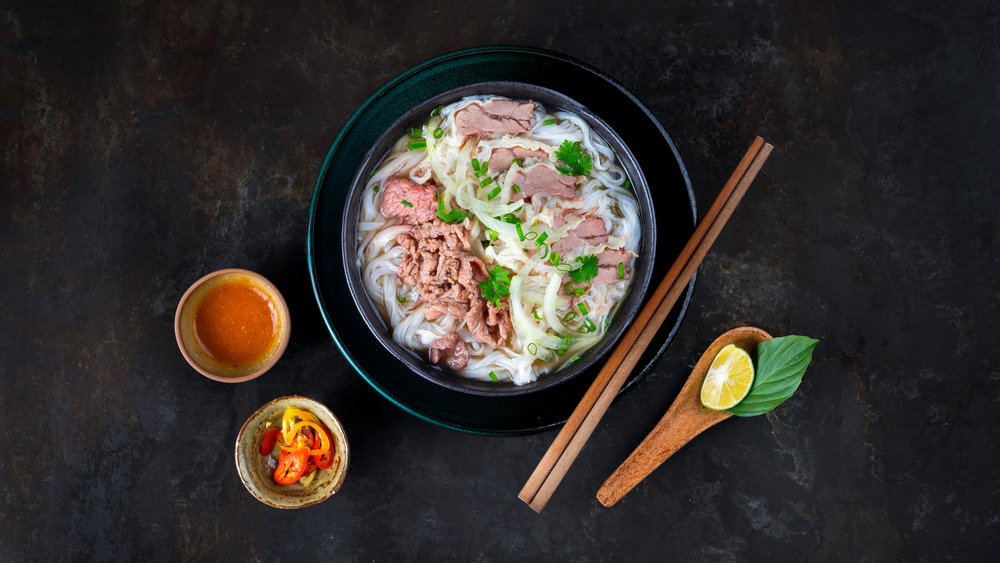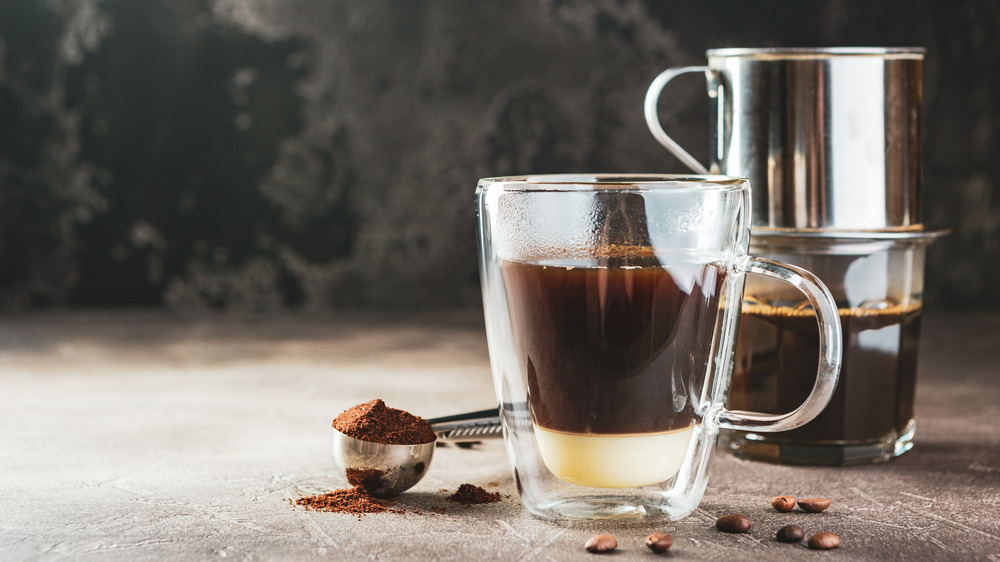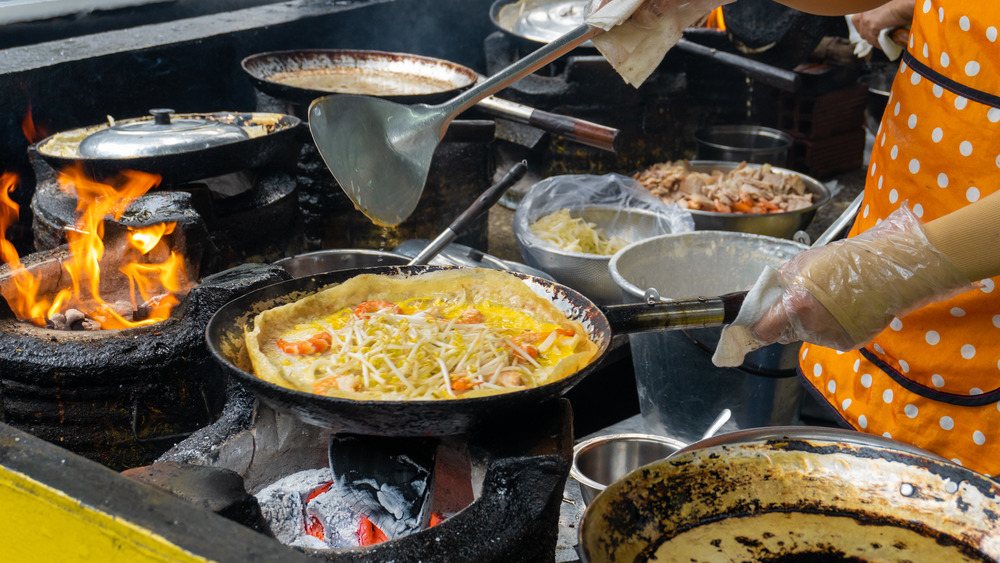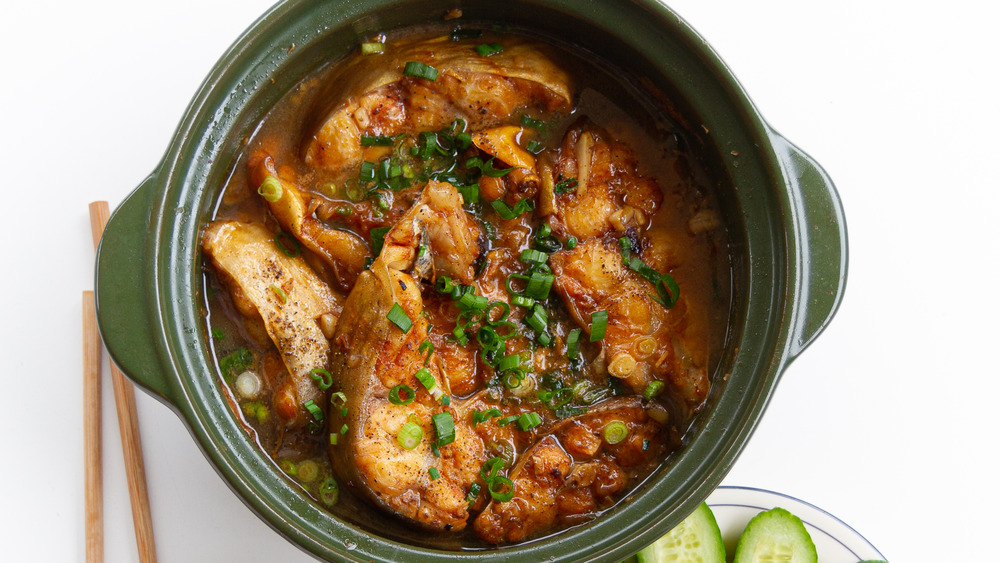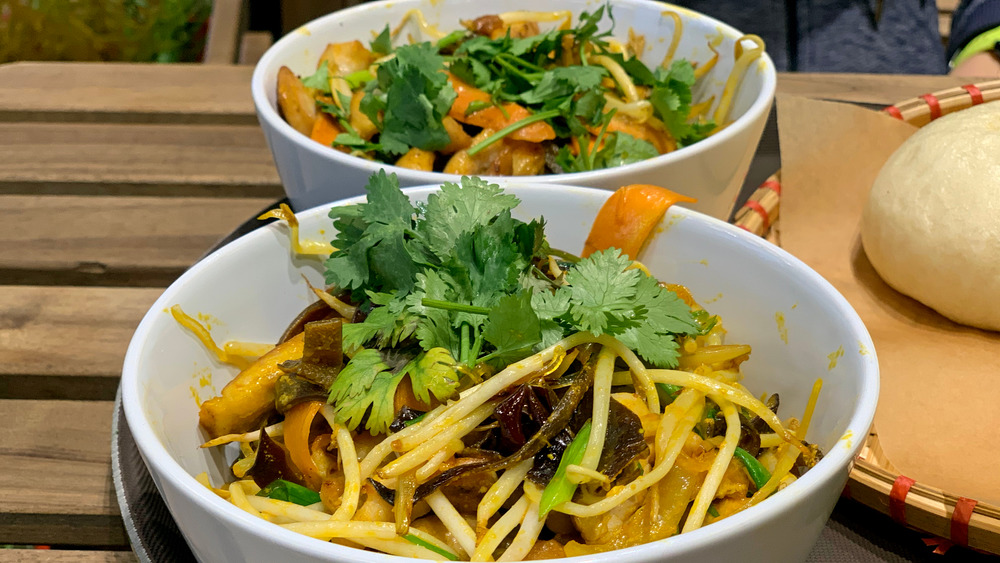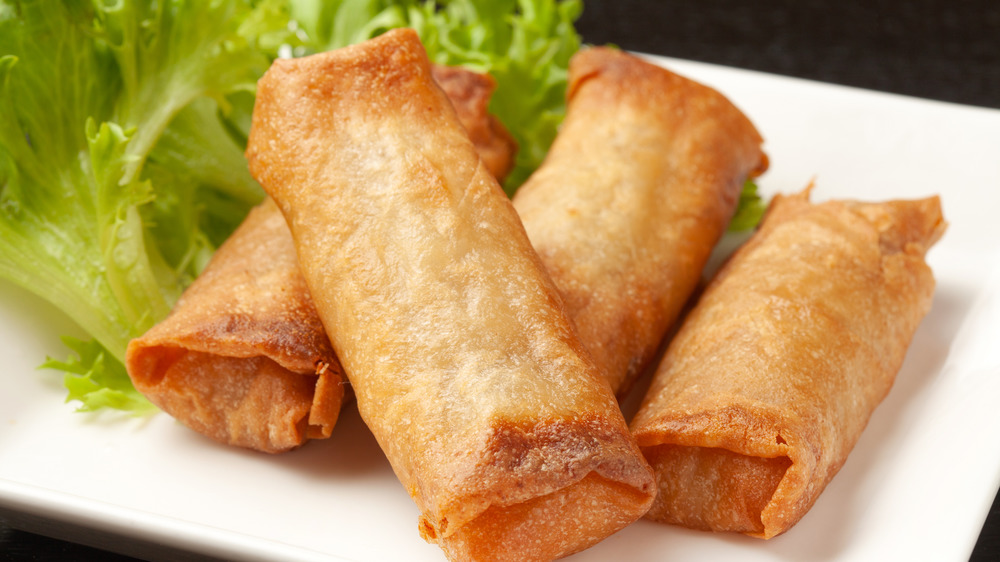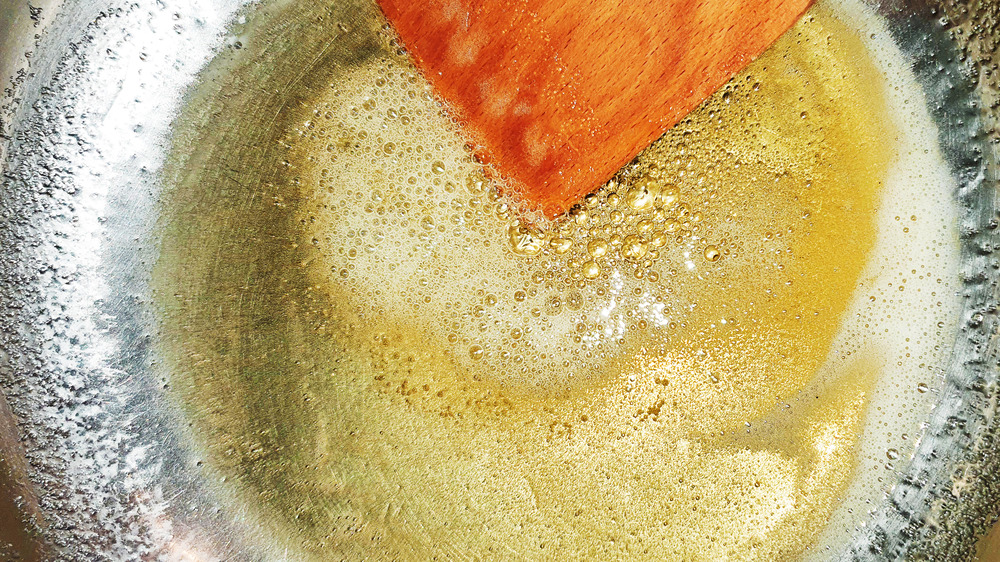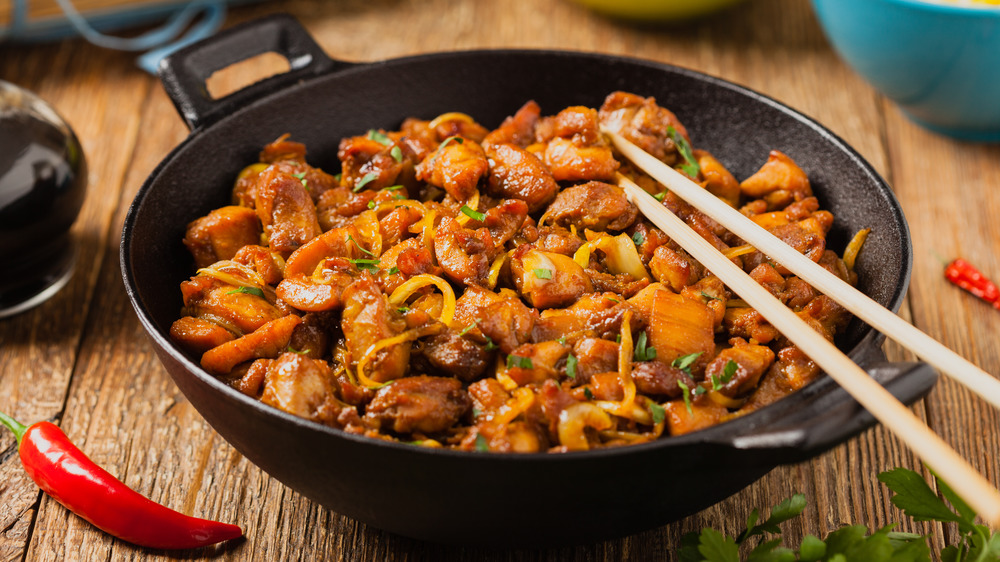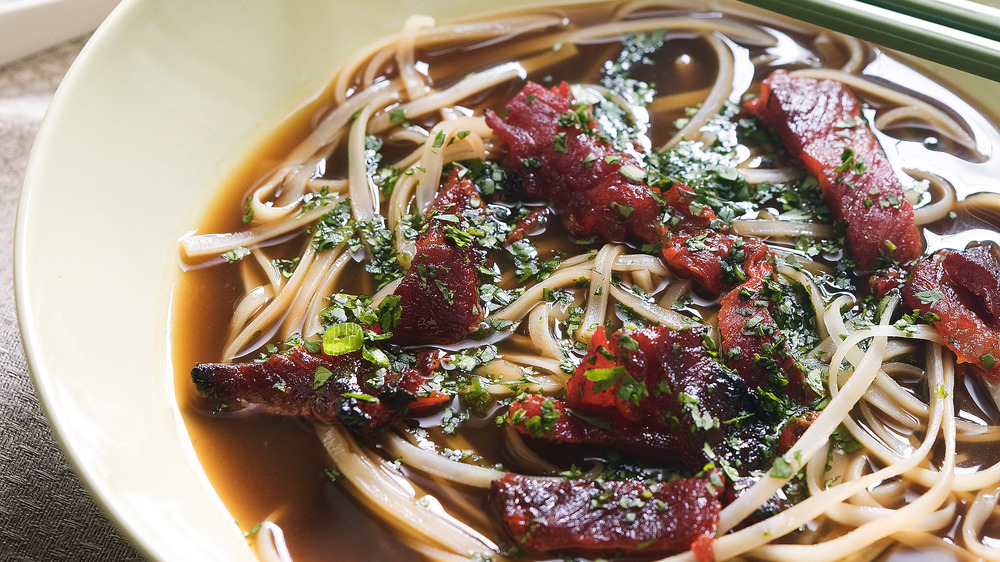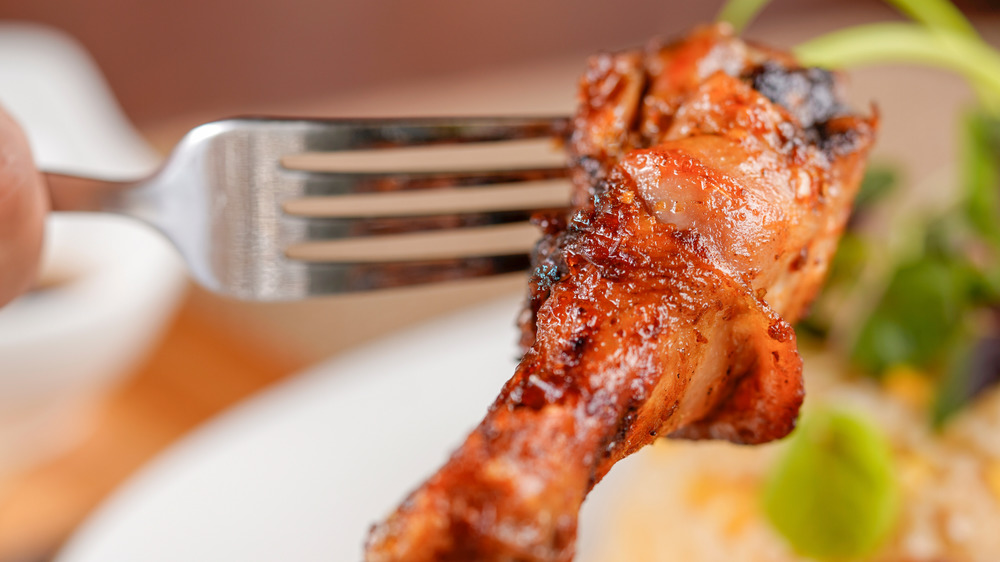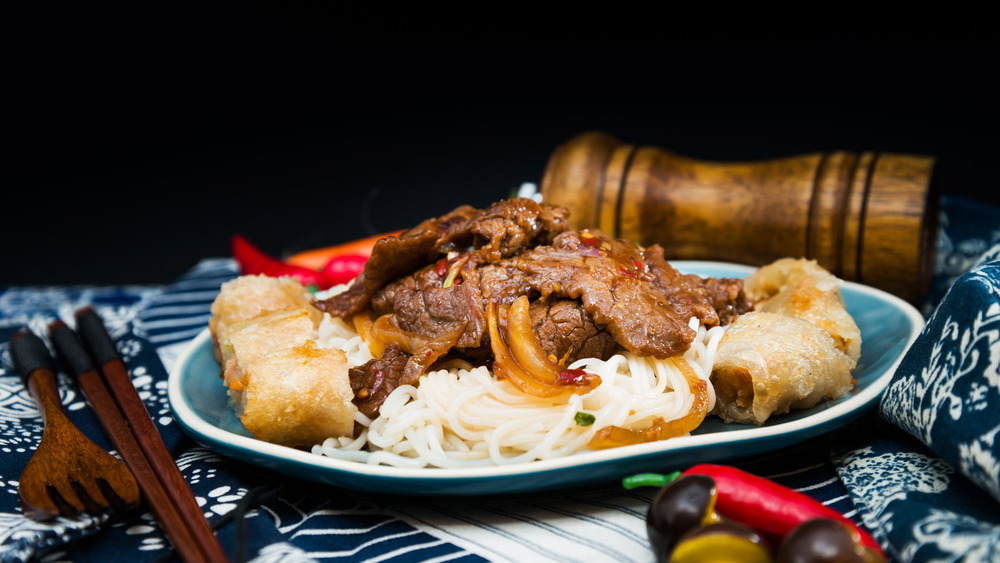Things You Should Never Order From A Vietnamese Restaurant
If you need to grab something delicious and healthy, Vietnamese restaurants always have something good in store for you. Whether you love a bowl of pho or a prawn papaya salad, Vietnamese food typically contains a low fat content, high amount of antioxidants, can improve your hair, and even help you lose weight (via HuffPost)! While this amazing culinary tradition can generally serve up just what you need, some options just can't hit the mark, especially if you need to watch your diet.
Sorting through menus to find unhealthy options proves challenging, but a few culprits end up popping out. According to Vietnamese travel cite City Pass Guide, the issues usually come down to some Vietnamese restaurants packing certain items to the brim with artificial food enhancers and using a bit too much salt for anyone's comfort. Customizing any of these dishes to your taste can raise the health benefits, but as things generally stand, you should aim to avoid these items in order to stick to the nutritional straight-and-narrow next time you hit up your favorite local Vietnamese restaurant.
Cà phê (Vietnamese iced coffee)
If you consider yourself a coffee lover but have never tried cà phê, you don't know what you have missed out on. According to Hungry Huy, this drink features strong black coffee that drips through a small press and mixes with condensed milk and ice to form one of the most luxurious iced coffee experiences you can ever imagine. While this drink tastes amazing, you have to be very careful where you get it, as many varieties of off-the-shelf Vietnamese coffee can be loaded with fillers.
According to MP Coffee, many brands of pre-ground Vietnamese coffee come loaded with roasted corn, soybeans and red beans, and some brands use up to 50% filler in each bag. These fillers serve to thicken, darken, and even sweeten the grounds. When in doubt, opt to purchase whole beans and finely grind the coffee yourself to get an experience that lives up to the hype.
If added fillers can't scare you away from this treat, that this drink relies on sweetened condensed milk should raise some flags if you need to watch your waistline or sugar intake. According to Berkeley Wellness, the sugar contained in this drink makes it one of the more nutritionally unsavory items you can purchase during your next Vietnamese brunch.
Bánh xèo (Vietnamese crepe)
Any crepe lover could get tempted by a bánh xèo, a Vietnamese-style crepe filled with fresh herbs and shrimp (via Allrecipes). This amazing crepe has earned its delicious reputation for a solid reason — a serving calls for the use of a cup of coconut milk.
On the one hand, this ingredient, which is considered "high-calorie," comes packed with healthy minerals and nutrients, like iron and fiber, according to Healthline. However, coconut milk also comes loaded with saturated fat, and it's still debatable whether it's a "good" kind of saturated fat (via Women's Health), and the amount of calories in this dish might not help when it comes to your waistline.
According to Aspire Fitness, bánh xèo packs 23% of your daily fat content for the day. The 77 grams of carbs also push the limit of the dish to the extreme end. The high carb content and fat count make this an item that's better split amongst friends and family, but if you decide to tackle it alone, you likely face gaining a significant amount of calories. And so, if you need to watch your fat or calorie intake, this crepe won't do your waistline any favors. If you need to stick to a diet, make sure to avoid bánh xèo the next time a craving strikes.
Cá kho tộ (clay pot catfish)
When we go out to a restaurant, we love to order menu items with a bit of flair. Nothing can serve up excitement like ordering cá kho tộ, a catfish dish that comes in a clay pot. According to Hungry Huy, the version of this dish we typically see in restaurants in America features catfish or mackerel, while the traditional take on the recipe calls for cá lóc, or snakehead fish. Regardless of the choice of fish, the dish requires some extra rice and vegetables to enjoy with it, as it comes with a high salt content.
If you need to watch your daily sodium count, make a point to avoid cá kho tộ the next time you're craving Vietnamese food. According to the Harvard School of Public Health, too much salt can potentially raise blood pressure and cause cardiovascular issues in anyone predisposed to the condition. And according to Berkeley Wellness, certain versions of cá kho tộ also feature fried fish, adding in some unwanted extra fat. Make sure to approach cá kho tộ with caution if you need to cut back on salt or watch your fat intake.
Miến gà (Vietnamese glass noodle soup)
If you love chicken noodle soup, miến gà has your name all over it. This savory comfort food features a special richness derived from fish sauce and sugar, provides flavor notes of ginger and lime, and takes a whole chicken to make (via The Feed Feed). According to Hungry Huy, miến gà also uses cellophane noodles, similar to the ones you might see in Vietnamese spring rolls, which adds some extra carbs to the dish. At first glance, this unassuming soup not only tastes and smells delicious, it also seems like it should provide some health benefits. However, if you need to watch your carb intake, then you'll need to approach this soup with caution.
According to Nola, glass noodles like the ones found in miến gà prove worse than their traditional wheat-based counterparts. This difference comes in the fact that cellophane noodles — which are made from mung bean starch — contain about as many carbs as other noodles, but have less fiber, making them less filling. Make sure to limit your serving next time you order this, or else you might pack in more carbs than you anticipated. And if you just can't resist its hearty flavors, Nola advises substituting the glass noodles with other noodle or veggie options.
Chả giò (Vietnamese Egg Rolls)
When you want to start a meal right, nothing hits the spot like egg rolls. Chả giò, the Vietnamese take on this classic dish, features a mix of shredded cellophane — or mung bean starch – noodles, ground pork, carrots and mushrooms blended together inside a rice paper wrapper and deep fried in hot oil (via The Wok of Life).
While this dish has stuck around thanks to its amazing texture and flavors, adding these to your meal can do some damage to your health due to the fact that each roll has to get deep fried in oil (via Berkeley Wellness). Also, some establishments fill these rolls up with more vegetables than meat, throwing the ratios off and serving you a product that might not meet the cost it has on the menu.
According to Healthline, the amount of trans fats and high calories absorbed into fried dishes like chả giò won't do your health any good and can lead to conditions like heart disease and diabetes. If you need to stick to a healthy eating plan, make sure to pass over these tempting meal accompaniments if you need to watch your weight.
Nước màu (caramel Water)
You can't have an authentic Vietnamese feast without nước màu. According to Hungry Huy, this sugary caramel water serves as a condiment and also a braising ingredient in many meat dishes. The recipe for this sauce proves incredibly simple — it just takes sugar and water to make this syrupy sauce that tastes great on many items, like thịt kho, or braised pork with eggs.
As you might expect, this sauce can't do your health any favors. According to Hungry Huy, the 48 grams of sugar and 186 calories that the sauce packs in make it a difficult ingredient to justify if you need to watch your health. As new FDA rules roll out recommending we decrease our daily intake of products with added sugar, more research comes out each year linking sugar to liver disease, heart disease, diabetes, and more (via Harvard School of Public Health). Do your body a favor and avoid this sauce next time a craving strikes.
Gà kho gừng (Vietnamese caramelized ginger chicken)
When you need to stick to a healthy eating plan, approaching any caramelized food with caution is probably a good idea. This advice comes twofold when you think about ordering gà kho gừng, or Vietnamese caramelized ginger chicken. This dish sets off some red flags due to the fact that the protein comes cooked in nước màu, a sweet caramel sauce, and the dish can also contain a significant amount of fish sauce, which, according to Australian studies, can provide almost all of your recommended daily sodium intake in just one tablespoon.
While the sweet and salty combination this chicken dish provides is understandably tempting, achieving that balance could require a cup of fish sauce while cooking (via Tasty Little Dumpling). When indulged in excess, the incredible set of textures and flavors of gà kho gừng could set many dieters back. If you want to watch your sodium or sugar intake, make sure to opt for healthier choices the next time you order from your favorite Vietnamese restaurant.
Sườn kho (Vietnamese-style braised spareribs)
If you love spare ribs, you have a variety to choose from. According to Bon Appetit, this cut of meat comes from the underside of a pig close to the belly. The belly meat typically turns into bacon or pancetta, while these particular ribs maintain some of the signature flavors of Vietnam cooking.
If you frequent Vietnamese restaurants with wide menus, you'll likely encounter sườn kho, a dish that braises this particular rib cut in a traditional caramel nước màu sauce. According to Viet World Kitchen, the nước màu and a hearty portion of fish sauce do wonders to flavor this dish.
While this dish tastes out of this world, it can rake in the calories. One variant of sườn kho that features hardboiled eggs has over 1,000 calories, 1,900 mg of sodium, and 105 grams of fat (via Hungry Huy). If you need to keep to a healthy eating plan, these spareribs might set you back, making them a hard meal to justify ordering.
Gà nướng (Chicken satay with peanut sauce)
You can't travel through Southeast Asia without experiencing some classic chicken satay. According to Delish, this delicacy features grilled and marinated chunks of chicken that come served on wooden skewers. For the ultimate experience, you can dunk your chicken satay in a peanut sauce made up of peanut butter, herbs and spices, soy sauce, and more. While this dish can win over anyone who tries it, anyone who needs to watch their health needs to stay away from this decadent entree.
According to Healthline, the peanut butter can make this dish a particular problem. This nut butter packs in large amounts of fat, including saturated fat, that can deal some real damage on your arteries. This is likely why health experts recommend you approach the dish, with caution due to the high fat content found in the dipping sauce (via Livestrong). Eating the dish in moderation won't hurt, but going all out can definitely pack in some unwanted pounds. For a wholesome dining experience, make sure to pass on the satay, or at least opt out of the dipping sauce to cut down on the artery-clogging fat — you won't regret it!
Phở xào thịt bò (Vietnamese stir fry rice noodles with beef)
Nothing hits the spot like a savory mix of stir fried noodles and beef. If you love pho but don't feel like a soup, this hearty delish can serve up many of the same tastes in a much more direct recipe. According to Delightful Plate, the dish features marinated pieces of beef served alongside a melange of vermicelli noodles and bok choy. Variations on the recipe additionally include adding carrots, the use of fish sauce, and a wealth of different herbs and seasonings (via Eat With Milly). While this dish guarantees to taste great and fill you up, the noodles that form the starch basis of the dish won't do your health any favors.
According to Nola, those of us seeking health-conscious Vietnamese items should steer clear of this dish, due to the heavy reliance on noodles. These carbs add up and can spike blood sugar, which in excess can lead to obesity and diabetes (via Healthline). When you need to grab a healthy meal, don't fall for this tempting option. Opt for an entree that cuts the carbs for an all-around good time instead.
